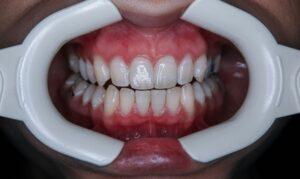Hair loss is a common concern for both men and women, and while factors such as genetics, hormonal changes, and medical conditions are often beyond our control, many cases of hair loss are exacerbated by improper hair care habits. Small mistakes in daily routines can significantly impact the health of your hair, leading to excessive shedding, thinning, and breakage. Recognizing these errors and taking corrective action is vital to preserving the strength, volume, and vitality of your hair.
In this article, we’ll explore 11 hair care mistakes that contribute to increased hair loss and discuss how to avoid them. By understanding these pitfalls, you can adopt healthier practices that protect your hair and promote long-term growth.
1. Overwashing Your Hair
While keeping your hair clean is essential for scalp health, excessive washing can strip your hair of its natural oils, leading to dryness, brittleness, and increased shedding. Natural oils, produced by the sebaceous glands in your scalp, play a crucial role in maintaining the hair’s moisture and elasticity. Washing your hair too frequently, especially with harsh shampoos, disrupts this balance and weakens the hair shafts.
To avoid this mistake, consider your hair type and lifestyle. Those with oily hair may need to wash it more often, but even then, it’s generally best to limit shampooing to three or four times a week. For dry or curly hair, washing once or twice a week is often sufficient. When washing, use a gentle, sulfate-free shampoo and focus on cleansing the scalp rather than the hair strands themselves. This approach maintains cleanliness without over-drying your hair.
2. Using the Wrong Shampoo
Choosing the wrong shampoo for your hair type or scalp condition can have long-term consequences for hair health. Many shampoos contain sulfates, parabens, and alcohol-based ingredients that strip the hair of moisture, cause irritation, and weaken hair follicles. These effects can lead to both immediate hair breakage and chronic thinning over time.
Select a shampoo specifically formulated for your hair’s needs. For example, if you have a sensitive scalp, opt for a hypoallergenic shampoo with soothing ingredients like aloe vera or chamomile. If your hair is dry or color-treated, look for products with moisturizing agents such as keratin, argan oil, or glycerin. Avoid shampoos with synthetic fragrances, which can irritate the scalp and exacerbate hair loss.
3. Ignoring Scalp Health
Many people focus solely on their hair strands while neglecting the health of their scalp, which serves as the foundation for hair growth. A dry, flaky, or oily scalp can create an environment that hinders hair follicles from functioning properly. Common issues like dandruff, buildup, or clogged pores can weaken hair at the root, leading to increased shedding and slower growth.
Caring for your scalp involves regular cleansing to remove dirt and excess oil, exfoliating occasionally to eliminate dead skin cells, and keeping it hydrated with nourishing treatments. Incorporate scalp massages into your routine to stimulate blood flow, which delivers essential nutrients and oxygen to the follicles. Using scalp-specific products, such as serums or tonics, can further support a healthy environment for hair growth.
4. Overusing Heat Styling Tools
Excessive reliance on heat styling tools like blow dryers, flat irons, and curling wands is one of the most damaging habits for your hair. These tools expose hair to high temperatures that can weaken the protein structure of the strands, resulting in dryness, split ends, and breakage. Over time, frequent heat styling depletes the hair’s natural resilience, making it more prone to shedding and thinning.
To minimize damage, reduce the frequency of heat styling and always apply a heat protectant spray before using any tool. Lower the temperature settings on your devices and opt for air-drying whenever possible. If you must use heat, invest in high-quality tools with adjustable settings and ceramic technology, which distribute heat more evenly and reduce damage.
5. Using Tight Hairstyles
Pulling your hair into tight ponytails, buns, braids, or extensions places undue tension on the hair follicles, a condition known as traction alopecia. This type of hair loss occurs when constant pulling weakens the roots, causing hair to fall out over time. If left unchecked, traction alopecia can lead to permanent follicle damage and scarring.
To protect your hair, opt for looser styles that do not exert excessive tension on the scalp. Use soft, fabric-covered hair ties instead of elastic bands that can snag and break strands. Rotate your hairstyles frequently to give your follicles a break, and avoid wearing tight styles overnight. If you use extensions, ensure they are installed by a professional and removed after the recommended duration to prevent long-term damage.
6. Brushing Wet Hair Aggressively
Hair is at its weakest when wet, as the moisture causes the strands to swell and become more elastic. Brushing or combing wet hair too harshly can lead to breakage, split ends, and even the removal of hair directly from the follicle. Using the wrong type of brush or comb exacerbates the damage, particularly for fine or curly hair types.
Instead, use a wide-tooth comb or a detangling brush specifically designed for wet hair. Start from the ends of your hair and work your way up to the roots, gently detangling knots without pulling. To further protect your hair, apply a leave-in conditioner or detangling spray before combing to reduce friction and make the process smoother.
7. Overprocessing Hair With Chemicals
Frequent chemical treatments, such as coloring, bleaching, perming, or relaxing, can strip your hair of its natural oils and weaken its structure. These processes break down the hair’s protein bonds, leaving it brittle and more prone to breakage. Repeated overprocessing can lead to cumulative damage that may result in noticeable thinning over time.
To avoid this, limit chemical treatments to a few times a year and always seek the services of a professional stylist who understands how to minimize damage. Use products designed for chemically treated hair to restore moisture and strength, and incorporate protein-rich hair masks into your routine to repair damage.
8. Skipping Regular Trims
While trimming your hair doesn’t directly impact its growth rate, neglecting regular trims can lead to split ends that travel up the hair shaft, causing more extensive damage. Over time, untrimmed hair becomes frayed, brittle, and more likely to break, giving the impression of thinning and unhealthy hair.
Scheduling a trim every 6-8 weeks helps maintain the health of your hair by removing split ends and preventing further damage. This routine not only improves the overall appearance of your hair but also ensures that it stays strong and manageable, reducing the risk of breakage-related hair loss.
9. Neglecting Sun Protection
Just as UV rays can damage your skin, they can also harm your hair and scalp. Prolonged sun exposure weakens the hair’s outer cuticle, leading to dryness, discoloration, and breakage. The scalp can also suffer from sunburn, which may inflame hair follicles and disrupt their function.
To protect your hair, wear a hat or scarf when spending extended time outdoors. Use hair care products with built-in UV protection, such as sprays or leave-in conditioners, to shield your strands from sun damage. These steps are especially important during summer months or in regions with intense sunlight.
10. Poor Diet and Nutrition
Hair growth relies on a steady supply of nutrients, including protein, biotin, zinc, and iron. A poor diet lacking in these essential vitamins and minerals can weaken hair, slow its growth, and increase shedding. Processed foods, excessive sugar, and crash diets can all deprive your hair of the nutrients it needs to remain strong and healthy.
To support hair health, focus on a balanced diet rich in whole foods. Include lean proteins, leafy greens, nuts, seeds, and omega-3 fatty acids from sources like salmon or flaxseed. Staying hydrated by drinking plenty of water also helps maintain the scalp’s moisture balance, which is crucial for healthy follicles.
11. Ignoring Early Signs of Hair Loss
One of the biggest mistakes people make is ignoring the early signs of hair loss, such as thinning, increased shedding, or changes in the hairline. Delaying action can lead to more significant hair loss that becomes harder to reverse over time.
If you notice signs of hair loss, consult a dermatologist or hair specialist to determine the cause and explore treatment options. Early intervention, whether through topical treatments like minoxidil, oral medications like finasteride, or advanced therapies like PRP, can significantly slow hair loss and preserve your existing hair.
Hair loss is often the result of a combination of factors, including genetics and lifestyle choices. While some causes may be unavoidable, many instances of hair loss are exacerbated by common mistakes in hair care routines. By identifying and correcting these 11 mistakes, you can reduce shedding, strengthen your hair, and maintain a healthy scalp environment that supports long-term growth.
Investing in proper hair care practices and addressing issues early on ensures that your hair remains vibrant, resilient, and less prone to damage. Small changes in your daily routine can make a significant difference, empowering you to take control of your hair health and prevent unnecessary hair loss.




